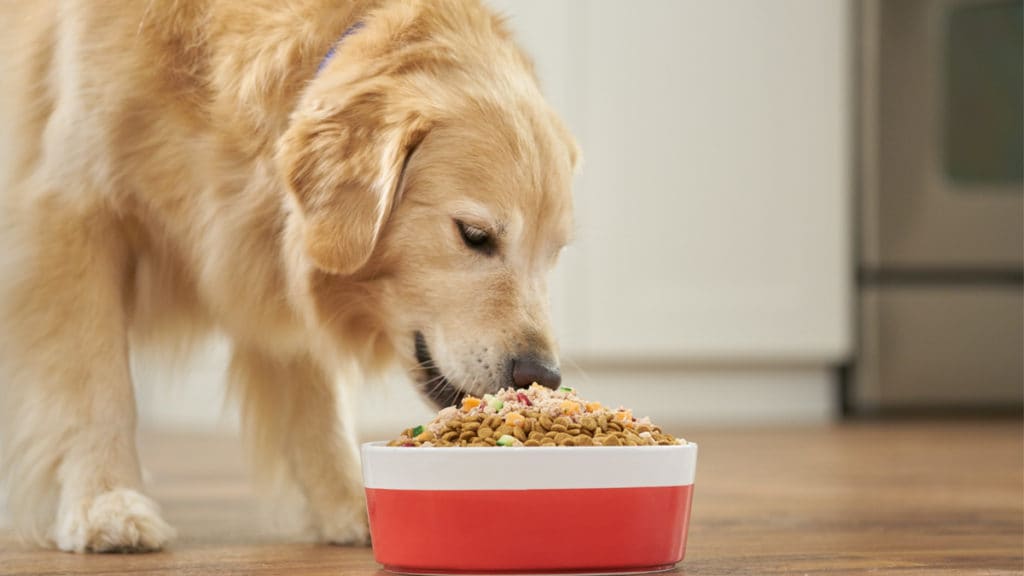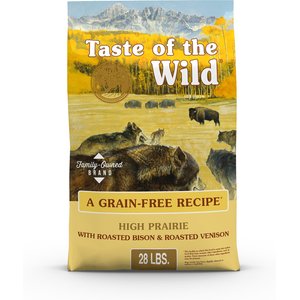Shopping for the best dog food is a bit like Alice falling down the rabbit hole: there’s a dizzying number of brands—Americans spend $23 billion on pet nutrition according to the American Pet Products Association—and it’s hard to tell how one package is different from the next. To save you time and confusion, consider these factors when looking for the best dog food.
Familiar Food
“I like to see whole and recognizable ingredients listed on the label,” says Dr. Joe Bartges, DVM, professor of medicine and nutrition at the University of Georgia’s College of Veterinary Medicine. It’s good practice to check the ingredients panel to look for familiar foods.
Good Stuff High in the Ingredients List
“Ingredients are listed in descending order by weight, so when you get to the 13th ingredient on the list, there cannot be very much of it present in the diet,” says Dr. Bartges. That’s sometimes with case with added fruits or vegetables. You might see them or other ingredients for dog nutrition touted on the label, but they’ll fall toward the bottom of the ingredients list, and there’s just not a lot in there. But in Wellness CORE Grain-Free Original Chicken & Turkey Recipe, peas are the fourth ingredient and potatoes are the fifth. Other items high in the ingredients list include salmon, apples, blueberries and kale.
Industry Standards
In order for any product to be marketed as complete and balanced dog food, it must meet the nutritional standards outlined by the Association of American Feed Control Officials (AAFCO). The standards for complete and balanced dog food include minimum (but not excessive) levels of about 40 nutrients that are vital for dogs. Look for the nutrition statement on the label—and note, for instance, what stage of a dog’s development the food applies to. For instance, Blue Life Protection Formula Chicken & Brown Rice Recipe meets the AAFCO’s guidelines for adult maintenance. Other categories include all life stages, growth and reproduction, and supplemental feeding only. “If it’s not complete and/or balanced, then it cannot be sold as a ‘food’ that supplies the sole source of nutrition,” says Dr. Bartges. Dog food that is not complete and balanced should only be used as dog treats or a topper.
Grain-Free Dog Food Options
Some dogs have food allergies—in fact, about 10% of allergy cases in dogs stem from what they eat. If your dog has constant itchiness and other symptoms like ear inflammation and gastrointestinal issues, ask your veterinarian whether food allergies might be the cause. One of the most common food allergies in dogs is wheat, and the plethora of new grain-free formulations may provide the best dog nutrition for sensitive pups. Taste of the Wild High Prairie Grain Free Dog Food is made with ingredients like buffalo, lamb meal, sweet potatoes and chicken meal. It also meets AAFCO’s guidelines for adult maintenance. Another option is American Journey Chicken & Sweet Potato Recipe Grain Free Dog Food. Besides the ingredients mentioned in the name, it also contains turkey meal, chickpeas, flaxseed and a few other ingredients. It doesn’t have eggs or beef in the ingredients’ list so it may be a good choice for pet nutrition if your dog has multiple food allergies.
Your Vet’s Choice
Your trusted veterinarian may have suggestions for dog food based on your pet’s breed, size, health issues and other personalized factors. Don’t be shy to ask for an opinion the next time that you bring in your pet. If your veterinarian hesitates about giving a blanket recommendation, you may want to bring in a copy of the ingredients list and nutrition information from a brand you’re considering (you can simply print it out online) and ask for an opinion.
Share:













